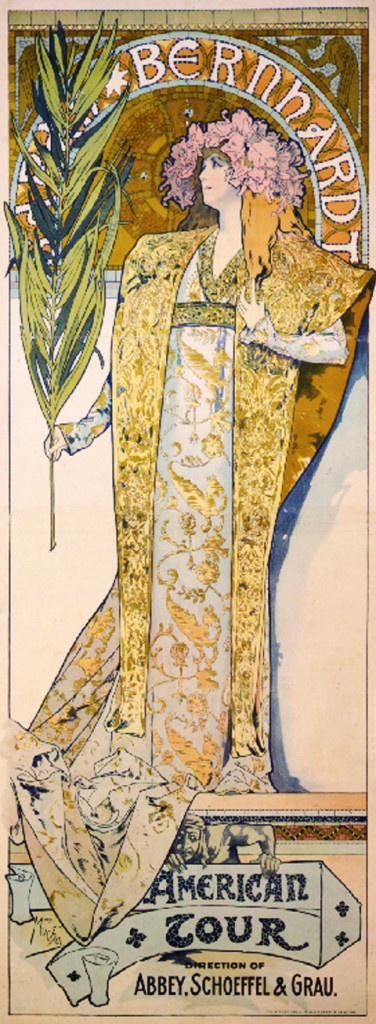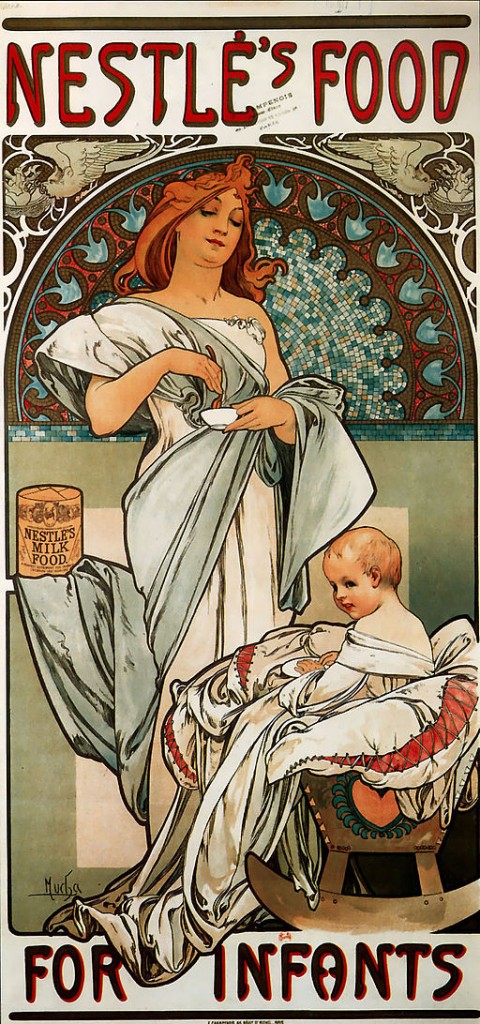The Concordia Wells Mysteries are set in the 1890s, during a period when the style referred to as “Art Nouveau” was popular.

The image at left is an 1896 poster that advertises the American tour of actress Sarah Bernhardt. It was done by Alfons Mucha, who created many posters and lithographs during this time.
Art Nouveau – or le style moderne, as it was known in France – is characterized by curves and flowing lines, with organic elements incorporated into the scene. In the Sarah Bernhardt poster, for example, you can see that she’s holding a palm and has a profusion of flowers in her hair.
Many of the background patterns in art nouveau are abstract, with curves and curlicues. Some images have a “stained glass” effect.
It’s not surprising that during this time Tiffany & Co. also put out their iconic stained glass, in the form of windows and lampshades.

Art Nouveau is not a uniform style, however: artist preference, country of origin, and how the particular piece would be employed (advertisement, magazine, artwork) were all factors that could create dramatic differences in the look. Here are a few more posters to give you an idea of the range:

And here’s an interesting 1897 ad for Nestle’s “Milk Food for Infants.” It looks as if a goddess is feeding the baby!

Here’s another 1897 poster. I think it is advertising tea, but the entry didn’t specify.

For more info on the Art Nouveau movement, check out this fascinating article by George Philip LeBourdais: What Is Art Nouveau? It’s a comprehensive scholarly treatment of the subject, exploring both the history and significance of the movement, and includes a timeline graphic. The article is posted on Artsy, whose mission is “to build the most comprehensive art database in the world and make it accessible to anyone with an internet connection.” Certainly a worthy goal!

